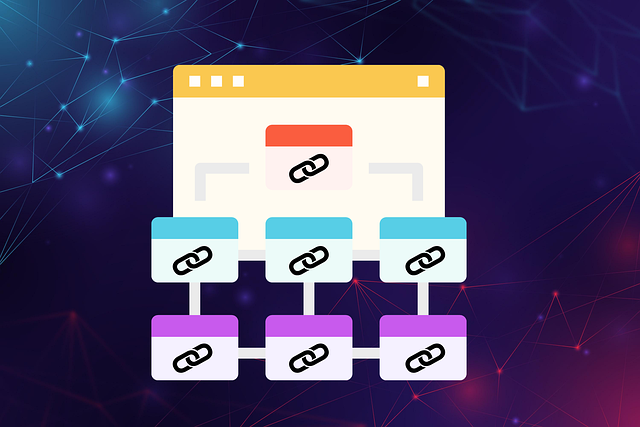Internal linking is a powerful SEO strategy that connects relevant pages within a website, improving user experience and online visibility. By strategically placing links between related content, you guide visitors and signal search engines about your site's depth and relevance. A key aspect of any SEO tutorial, effective internal link optimization involves contextual placement for both users and search crawlers. Beginners should focus on identifying key pages with essential topics, creating natural anchor text that is contextually relevant, and following best practices like using relevant keywords and maintaining a natural flow. Regularly reviewing and updating links is also crucial. Measuring performance using tools like Google Search Console and Analytics helps identify areas for improvement. Following these guidelines will help craft an effective SEO internal links strategy to enhance crawlability, engagement, and search engine rankings.
“Unleash the power of internal linking for your website’s success! This beginner’s guide offers a comprehensive, step-by-step approach to understanding and implementing SEO internal links. From graspings the basics of what they are to identifying crucial pages and crafting compelling anchor text, you’ll learn how these strategic connections boost user experience and search engine rankings. Discover best practices for implementation and measurement, ensuring your site’s visibility and performance.”
- Understanding Internal Links: The Basics
- Why SEO Internal Links Matter for Beginners
- Identifying Key Pages for Internal Linking
- Creating Effective Internal Link Anchor Text
- Implementing Internal Links on Your Website
- Measuring and Optimizing Your Internal Link Strategy
Understanding Internal Links: The Basics

Internal linking is a fundamental aspect of search engine optimization (SEO) that connects pages within your website to enhance user experience and improve its visibility on search engines. It’s a strategic approach where one webpage links to another relevant page on the same site. By implementing SEO internal links, you create a network that helps both users and search algorithms navigate through your content efficiently.
In simple terms, when you use SEO internal links, you guide visitors from one valuable piece of content to another related topic. This not only keeps users engaged but also signals to search engines that your website offers comprehensive information on specific subjects. A well-structured internal linking strategy can significantly impact your site’s ranking in search results, making it a crucial component of any SEO tutorial. It’s an art to optimize these links, ensuring they are contextual and beneficial for both users and search engine crawlers.
Why SEO Internal Links Matter for Beginners

For beginners navigating the digital landscape of search engine optimization (SEO), understanding the power of internal linking is a crucial step forward. These links, which connect relevant pages within your website, serve as a strategic tool to enhance both user experience and search engine visibility. By implementing how to use SEO internal links effectively, you can create a more coherent online presence, allowing users to navigate seamlessly while providing valuable context to search engines.
SEO internal links tips include integrating them naturally into your content, ensuring each link offers added value by pointing users towards relevant resources. This optimization technique not only helps in improving the crawlability of your site but also contributes to better keyword targeting, boosting your website’s overall SEO performance. With these strategies, you can ensure that your website becomes a symphony of interconnected pages, each playing its part in elevating your online visibility and attracting the right audience.
Identifying Key Pages for Internal Linking

When it comes to implementing an effective SEO internal links strategy, identifying the key pages within your website is the first step. These are the cornerstone content pieces that not only attract visitors but also hold significant value for your target audience. Consider the most important topics or questions your ideal audience might have; these often become your primary focus areas. For instance, if you run a blog on organic gardening, pages detailing various plant types, soil preparation techniques, and natural pest control methods would be essential key pages.
A SEO internal links tutorial can guide beginners in understanding how to seamlessly integrate these links into your content. You want to ensure that each key page is interconnected with relevant supporting articles, creating a network of information. For example, within the gardening blog, you might link to a soil preparation page from an article about starting an herb garden, or include a link to natural pest control methods in a post about common plant diseases. This strategic SEO internal links optimization not only enhances user experience but also signals search engines about the relevance and authority of your website’s content.
Creating Effective Internal Link Anchor Text

Creating effective internal link anchor text is a crucial aspect of implementing successful SEO internal links. When crafting anchor text, keep it natural and contextually relevant to the surrounding content. Avoid overusing keyword-rich phrases as this can appear spammy and negatively impact user experience. A good rule of thumb is to use specific keywords that accurately describe the target page while keeping the phrasing conversational and reader-friendly. For example, instead of “click here,” consider using more descriptive anchor text like “learn more about SEO strategies” or “read our comprehensive guide on keyword optimization.”
This approach not only enhances user engagement but also provides valuable context to search engines, helping them understand the relationship between pages on your website. Remember, an SEO internal links tutorial should focus on creating a seamless and beneficial experience for both users and search algorithms. By following these tips, you can optimize your internal linking strategy, improve crawlability, and boost your site’s overall authority in the eyes of search engines, making it a valuable resource for any beginner looking to master how to use SEO internal links effectively.
Implementing Internal Links on Your Website

Implementing internal links on your website is a fundamental step in enhancing its SEO performance and user experience. These links are crucial for guiding visitors to relevant content within your site, which can significantly improve navigation and keep users engaged. A well-crafted internal linking strategy acts as a road map, helping search engines understand the hierarchy and context of your pages.
To get started, identify key pages that should be interconnected based on their topics or user behavior. For instance, if you have an article about “SEO Best Practices,” link to other relevant articles like “On-Page SEO Techniques” or “Keyword Research Strategies.” Ensure each internal link provides value by offering additional information related to the anchor text. This approach not only benefits users but also tells search engines that your site is authoritative and well-organized, contributing to better SEO internal links optimization. Follow a simple SEO internal links tutorial: use relevant keywords in anchor text, keep links contextual, and maintain a natural flow throughout your website’s structure.
Measuring and Optimizing Your Internal Link Strategy

Measuring your internal link strategy is a crucial step to understand its effectiveness and identify areas for improvement. Utilize SEO tools like Google Search Console and Google Analytics to track click-through rates (CTRs) from internal links, which can reveal popular content and potential gaps in your site’s navigation. By analyzing where users are clicking and how they move through your site, you can refine your internal linking strategy to enhance user experience and boost search engine rankings.
To optimize your SEO internal links, focus on creating a natural and relevant link structure. Ensure that anchor text is descriptive and accurately represents the linked page’s content. Use a mix of keyword-rich anchors and generic ones for a more diverse and organic profile. Regularly review and update your internal links to maintain their relevance, especially as your website grows and new content is added. This SEO internal links tutorial will guide you in crafting an effective strategy that improves crawlability, enhances user engagement, and ultimately contributes to better search engine visibility.
